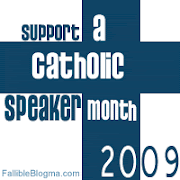I'm out of Rome, in a little beach town where I use to spend the month of August.
Not to do anything special: a little swimming in the morning, and for the rest of the day what I usually do, i.e. cultivate my studies.
This year I brought with me my Bible and a few books about the Bible.
As a matter of fact, I must confess that, being an old style Catholic, I am more confident with the doctrine and the philosophical reflection on it than with the Sacred Scriptures. For what concern these, I am mostly confident with them through their use in the liturgy.
It isn't that I didn't do my amount of reading in Bible studies. And I definitely have my liking and disliking among Bible scholars. The ones I dislike make the scriptures into something speaking about those who wrote them; the ones I like make them into something of enduring significance, hence speaking of and to us.
Here it is what makes me an old style Catholic, over against the contemporary protestant like trend toward a direct reading of Scriptures: in acknowledging that such a reading needs a guide.
It is hard to crack the code, so to speak, of Scriptures: especially the Old Testament, to see how and why the New Testament makes no sense without it. Or, if it makes sense, it is because it implies it, even though its reader might not be aware of it.
The Christian reader must learn the essential imagery the Old Testament writers employ. Speaking from the beach, one example is sufficient.
On the beach the sea looks rather tame. For the Old Testament writers the sea was the untamed element par excellence. It was God who tamed it, setting limits to it.
Isn't it, such a natural image of chaos, also a nice metaphor for human passions? And though, we pretend to do away with God and at the same time to keep our passions in sufficient control to make social life possible!
Possibly to be continued.
HP






No comments:
Post a Comment